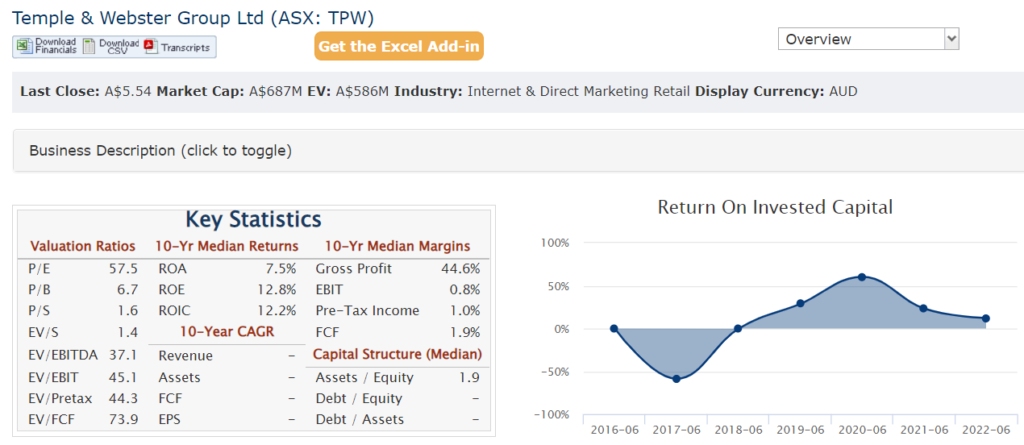As investors, we’re all in search of the next great stock that can 10x (or better) our money in the coming years. But finding these hidden gems can feel like searching for a needle in a haystack.
Truth be told, there just aren’t that many undiscovered domestic stocks in the United States. The U.S. is home to many of the best companies and brightest minds in the world, but we live in an era where information is literally at our fingertips. As a result, the stock of exceptional companies doesn’t stay hidden for long.
Overzealous investors are quick to pick up the scent, buying up shares and sending stock prices to irrational heights. Value-minded investors are forced to stay on the sidelines in hopes the share price returns to reality.
If you’ve ever been frustrated because you simply can’t find any relatively unknown, reasonably-priced, high-potential companies in the U.S. stock market, let me introduce you to the world of international investing.
DISCLAIMER: This article may contain affiliate links for which I earn a commission if a reader purchases an associated product or service. Please know that I only promote products or services in which I have personal experience and/or believe could add value to readers.
International markets attract less capital
One of the primary reasons it’s difficult to discover unknown gems in U.S. equities is because U.S. markets attract an enormous amount of capital (i.e. cash) from institutions, hedge funds, portfolio managers, and retail investors.
Last year, U.S. markets accounted for nearly 50% of global market capitalization, meaning nearly half of all dollars invested are invested in US stocks. The second largest country by market cap is China at a measly 11%.

The simple fact that there’s a lot of money flowing into domestic markets means two things:
- All those dollars must be allocated somewhere, namely stocks and exchange-traded funds (ETFs)
- The shear amount of money needing allocated drives up stock prices
Because international equities account for 50% of global equity market cap, which is spread out over a dozen exchanges, foreign markets represent an opportunity for US investors. With foreign stocks, there’s typically a lot less liquidity which tends to lead to more undiscovered gems which are attractively priced.
Less participation means greater opportunity
It’s quite easy to obtain a company’s operating data and stock trading metrics, such as EPS growth and P/E ratios, on U.S. listed stocks. Nearly all reputable brokerages, including TD Ameritrade and Fidelity, offer stock screeners and fundamental and technical data. Finding potential investment opportunities on U.S. exchanges has never been easier. This is another reason why finding undiscovered gems is difficult. It’s almost hard not to know a company’s 5YR EPS growth and operating margin.
However, this isn’t the case with international stocks. I can’t login to my Fidelity account and screen for international stocks because Fidelity doesn’t offer trading on international exchanges. Nor does TD Ameritrade, E*Trade, or Charles Schwab. The closest I can get to gaining international exposure with any of these brokerages is by buying mutual funds or Depository Receipts.
Because funds flowing into international stock markets are muted compared to the US, and international stock data is more laborsome to uncover, there tend to be more needles in the haystack with foreign investments.
Open an Interactive Brokers account
So, if you want to participate in international investing, the first thing you’ll need to do is open an account with a brokerage house that offers international funds and non-U.S. stocks. Personally, I recommend Interactive Brokers who’s ranked #1 by StockBrokers.com for international trading. Interactive Brokers offers access to over 90 stock exchanges in the US, Canada, Europe and Asia.
Also, for those investors trading on margin, Interactive Brokers’ margin rates are significantly lower than the competition. For comparison, Interactive Brokers’ current interest rates are just north of 6% while TD Ameritrade’s are over 13%. Where Interactive Brokers can cost you, though, is with commissions on trading, so buyer beware.
Discover international companies
Expanding your investing wings to include global markets opens up a new level of excitement and opportunity. After all, there’s nothing quite like finding what you believe to be an exceptional, undiscovered company, taking up a position, and watching it grow. The hunt is part of the excitement. It’s sort of like searching for eggs on Easter morning coupled with opening presents on Christmas day. It just doesn’t get much better.
However, U.S. investors are at somewhat of a disadvantage when it comes to discovering foreign companies. This is because, if the company doesn’t do business in the U.S., investors may lack that all important anecdotal evidence (i.e. personal experience).
I enjoy Starbucks coffee, so it’d only be natural for me to become a shareholder (at the right price of course). Unless you’ve spent some time in the country you’re investing in, it’s unlikely you’ll know if there’s a Starbucks of Latin America or Home Depot of the United Kingdom, for example.
So, how are U.S. investors to find international companies to invest in?
Try a global stock screener
When I first opened an account with Interactive Brokers, I was hopeful they’d offer a global stock screener. But, what I quickly learned is Interactive Brokers’ stock screener leaves much to be desired. I wanted a screener that would help me build a list of the best international stocks, but Interactive Brokers was unable to deliver. They offer a ton of fundamental data on international stocks, but you need to know the stock ticker to make good use of it. What I needed help with was finding the ticker.
Fortunately, there are a few global stock screeners out there to help investors uncover potential hidden gems in international financial markets. Personally, I’m a fan of the Financial Times Global Equity Screener. The basic version is completely free and, while it’s not the most intuitive or user-friendly, it gets the job done.
I was able to use it to uncover a number of foreign investment ideas, a few of which I’ve since taken up a position. Some interesting stock examples include:
- Temple & Webster (TPW.AX) – Australian online retailer of furniture, homeware, and hardware
- Mips Corp (MIPS.ST) – Swedish company engaged in the design, manufacture, and sale of helmet-based safety solutions
- Audioboom (BOOM.L) – trading on the London Stock Exchange, a podcast company engaged in hosting, distributing, and monetizing podcasts
Investor Relations websites are your friend
There’s a bit of a stigma that comes with investing in international companies because it’s believed non-U.S. markets don’t operate under the same scrutiny as U.S. markets and U.S. companies. Depending on the country, this may be true, and the probability of fraud may be higher when holding certain foreign shares.
However, you’d be surprised by just how many foreign companies operate an Investor Relations website, publish quarterly financials, host investor day events, prepare investor presentations, etc… just like U.S. listed companies.
When I began my journey in international investing, I was pleasantly surprised by the amount of information I was able to glean from Investor Relations websites. Many of the companies may have well been listed on the New York Stock Exchange as I couldn’t tell the difference.
Each of the examples listed above host an Investor Relations website for shareholders and interested investors.
Check Quickfs for historical data
One of my favorite tools for analyzing stocks is Quickfs. I learned about Quickfs by listening to one of my favorite investing podcasts, Focused Compounding. Quickfs is a free tool (paid versions as well) that allows you to quickly review a company’s past 10 years financial and operating history.
One of the reasons I love Quickfs is because it includes data on a lot of international stocks as well. Not all, but many.
After you’ve identified a few high potential international stocks and reviewed their IR websites, you can then analyze the company using Quickfs.

Beware of currency risk
When investing in international stocks on foreign markets, you’ll need to familiarize yourself with foreign currency exchange rates (forex). This is because, for example, if you’re investing in a Japanese company trading on the Tokyo Stock Exchange, you’ll need to convert your U.S. dollars (USD) to Japanese Yen (JPY).

So, if you’ve just funded your Interactive Brokers account with $1,000 USD, and you’re wanting to invest in a Japanese company, you’ll actually need to make two trades. First, you’ll need to convert your USD to JPY, which will be executed at the current forex rate. Then, you’ll need to purchase stock in the Japanese company.
Converting to another currency can be risky because currency markets fluctuate. The U.S. dollar may be strong today, but could come tumbling down tomorrow due to economic developments, rate adjustments from central banks, etc…
A tumbling USD or drastic change in forex rates within your country of interest has the potential to eat into investment gains. For example, a 50% return on a Japanese stock may be worth a lot less if the JPY were to crumble prior to converting back to USD.
Bottom line
If you’re searching for the next 10 bagger, but can’t seem to find any good candidates in U.S. equities, consider expanding your horizon to include international stocks. Foreign markets open up a whole new world to interested investors and, to those willing to put in the homework, may offer a few more hidden gems than domestic stocks.
Consider opening up an account with Interactive Brokers or similar brokerage firm, but be sure to familiarize yourself with currency and forex risks associated with investing overseas.
